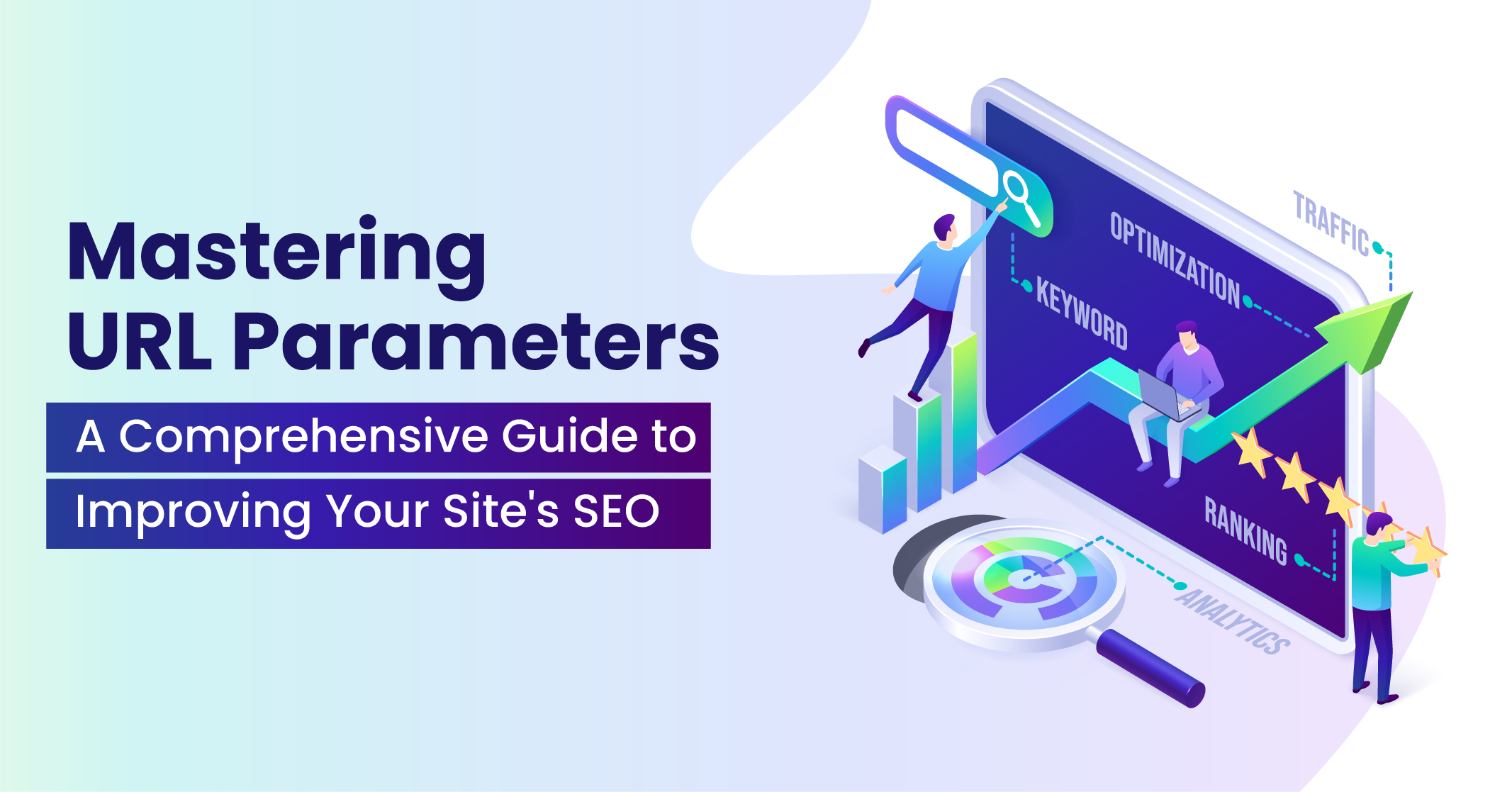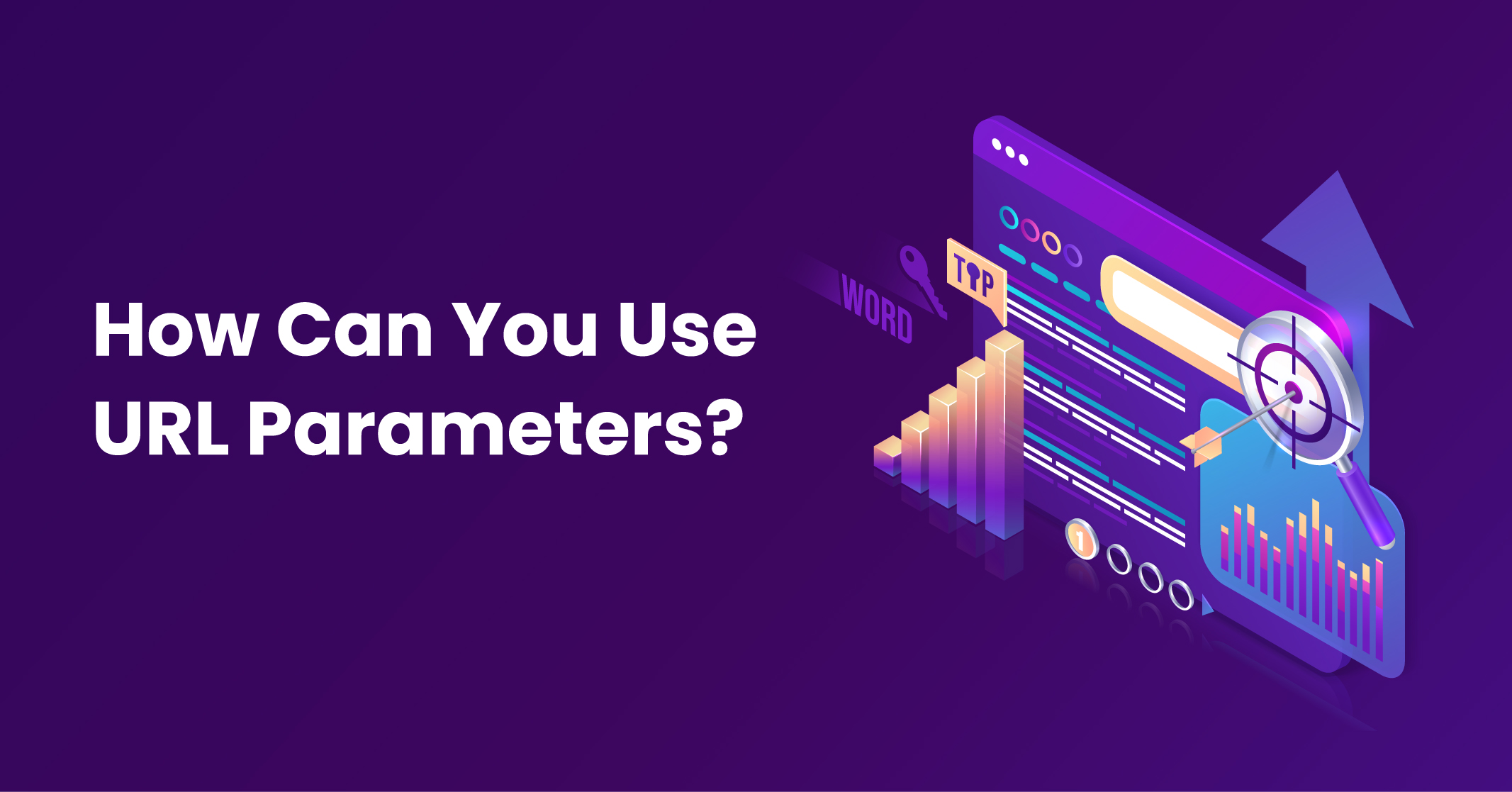I hope you enjoy reading this blog post.
If you want to get more traffic, Contact Us

Click Here - Free 30-Minute Strategy Session
Be quick! FREE spots are almost gone for this Month. Free Quote

URL parameters are a way to pass information from a web page to the server or another page. They are added to the end of a URL and are preceded by a question mark (?), with multiple parameters separated by an ampersand (&).
URL parameters are commonly used for the following applications:

Click Here – Free 30-Minute Strategy Session
Be quick! FREE spots are almost gone for this Month
Did you know URL parameters can be accessed and manipulated using JavaScript or server-side scripting languages? URL parameters can pose significant obstacles to your website’s SEO, even when handled by experienced SEO practitioners. To help you avoid these challenges, this blog outlines some of the most frequent URL parameters for SEO and how to use them for your benefit.
In basic terms, URL parameters refer to a series of characters that are appended to the end of a URL to furnish extra information to the server. This additional data is utilised to pass on variables and information to the server, which can be leveraged to tailor the content displayed to the user.
URL parameters are typically separated from the base URL by a question mark (?), with each parameter separated from the other by an ampersand (&). As an instance, consider the URL “https://www.example.com/search?q=seo&sort=price”, which comprises two parameters: “q=seo” and “sort=price”.
URL query parameters are a specialised subset of URL parameters that are employed to transfer information to a web application. These parameters facilitate the dynamic alteration of the content displayed on a web page.
For instance, when you search for “SEO” on Google, the URL generated contains a query parameter that incorporates your search term. This mechanism enables Google to dynamically generate search results that are tailored to your query.

URL parameters are often leveraged to sort the content of a webpage, providing users with a more efficient way to navigate products in an online store. These query strings enable users to arrange a page based on specific filters and limit the number of items displayed per page.
Furthermore, tracking parameters implemented as query strings are also prevalent. Marketers frequently use these parameters to track traffic sources, thereby monitoring the efficacy of their social media campaigns, ad efforts or newsletters.
Google Developers specify two categories of URL parameters:
Parameters that modify content (active): These parameters modify the content exhibited on a webpage.
For instance, to redirect a user to a particular product called “XYZ,” use this URL:
http://domain.com?productid=xyz
Parameters that facilitate advanced tracking (passive): These parameters pass on information such as which network the traffic originated from, the campaign, the ad group, etc. But do not modify the content of the page.
For instance, to track traffic sourced from your newsletter, use this URL:
https://www.domain.com/?utm_source=newsletter&utm_medium=email
Or, to collect campaign data with customized URLs, use this URL:
https://www.domain.com/?utm_source=twitter&utm_medium=tweet&utm_campaign=summer-sale
While managing URL parameters might appear simple, it is essential to use them appropriately. We’ll soon discuss the correct and incorrect methods of employing URL parameters. But, let’s review some examples first.
URL parameters can become an SEO issue when:
Proper handling of URL parameters is crucial for good SEO. If not managed well, parameterized URLs can create endless duplicates of non-unique content, wasting your crawl budget, diluting ranking signals and hurting URL readability. However, webmasters can take steps to mitigate these issues through proper tagging.
What To Do?
To start, ensure that URLs with passive parameters are not indexed, as they lead to duplicate content. Check your crawl budget regularly to avoid wasting resources on low-value parameterized URLs generated by faceted navigations.
Important Points To Keep In Mind:

If you require the ability to modify or track content, parameterized URLs can be helpful, and it’s advisable to consider them as part of your SEO strategy. However, it’s crucial to inform web crawlers when they should or should not index certain URLs with parameters and to designate the most important version of the page. It’s recommended that you carefully determine which parameterized URLs should not be indexed and allow web crawlers to familiarise themselves with your site’s pages over time.
Various URL parameters can be utilised to tailor the content of a webpage. A few commonly used examples are as follows:
To optimise your site’s URL structure for SEO, there are certain guidelines that you should keep in mind:
Various tools can assist you in managing your site’s URL parameters and optimising them for search engines.
Using these tools can provide you with a better understanding of how your site’s URL parameters are influencing your SEO and allow you to make the necessary improvements to improve your site’s performance.
To optimise your website’s SEO with URL structure, you can consider the following factors:
Regular testing and monitoring of your site’s URL parameters are essential to optimize them for search engines. You can utilise tools such as Google Analytics and Google Search Console to gain insights into your site’s performance.
Through consistent monitoring, you can identify and resolve any issues related to your URL parameters that may be negatively impacting your site’s SEO. By making the necessary optimizations, you can improve your site’s overall search engine ranking and drive more traffic to your website.
Using URL parameters in the wrong way can have a negative effect on your site’s SEO but if used properly, they can provide useful information on user behaviour and help you customise your site’s content. By following the guidelines mentioned in this guide, you can ensure that your site’s URL parameters are optimized for search engines and don’t hurt your site’s SEO.
If you require assistance with optimising your site’s URL parameters for SEO,Traffic Radius can help.
URL parameters can have a significant impact on a website’s search engine optimization. If used incorrectly, they can create duplicate content issues, which can negatively impact a website’s search engine rankings. When search engines crawl a website, they may see multiple versions of the same content due to the use of URL parameters.
To ensure that URL parameters are optimized for SEO, it’s important to follow best practices, such as using descriptive, keyword-rich URLs, keeping URLs short and simple, using hyphens to separate words, and avoiding special characters. Website owners can also use tools like Google Analytics and Google Search Console to monitor their site’s performance and identify any issues with URL parameters that may be impacting their search engine rankings.
When it comes to the best URL structure for SEO, there are a few key best practices to follow. Use descriptive and keyword-rich URLs. This not only helps search engines understand the content of the page but also helps users understand what they can expect to find on the page.Second, keep your URLs short and simple. Long and complex URLs can be difficult for users to read and remember, and can also be less favoured by search engines. Keeping URLs concise and straightforward can make them more user-friendly and improve your site’s SEO.
Third, use hyphens to separate words in your URLs. Hyphens are the preferred method of separating words because they are more easily recognized by search engines. Avoid using underscores, which can sometimes be interpreted as part of a word.
Finally, maintain a consistent URL structure throughout your site. This makes it easier for search engines to crawl and index your site, which can improve your site’s SEO.

LEAVE A REPLY